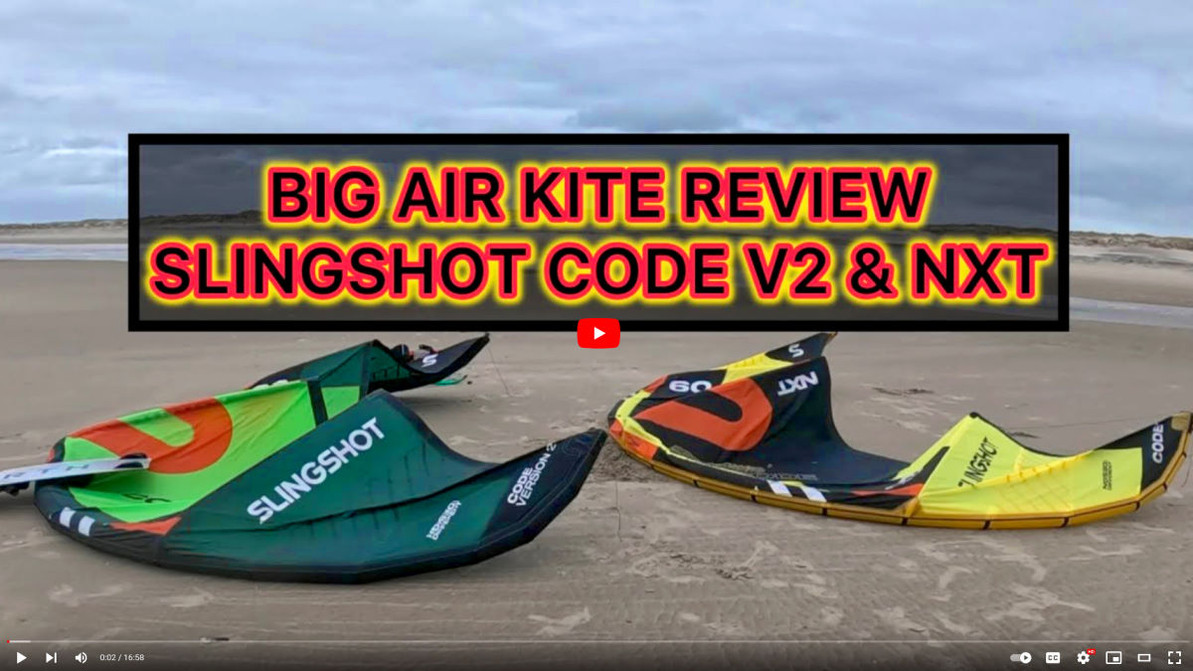Big Air Kite Review - Slingshot Code v2 and NXT
Guest vlogger Jason Montreal is back with another big air kite review. He's going to cover two kites in this edition: the Slingshot Code v2 and the Code NXT. Even though they're both Codes and are quite similar in shape and flight characteristics, the Aluula in the NXT does add something extra, and many people are probably wondering if it's worth it for them to spring for the upgrade.
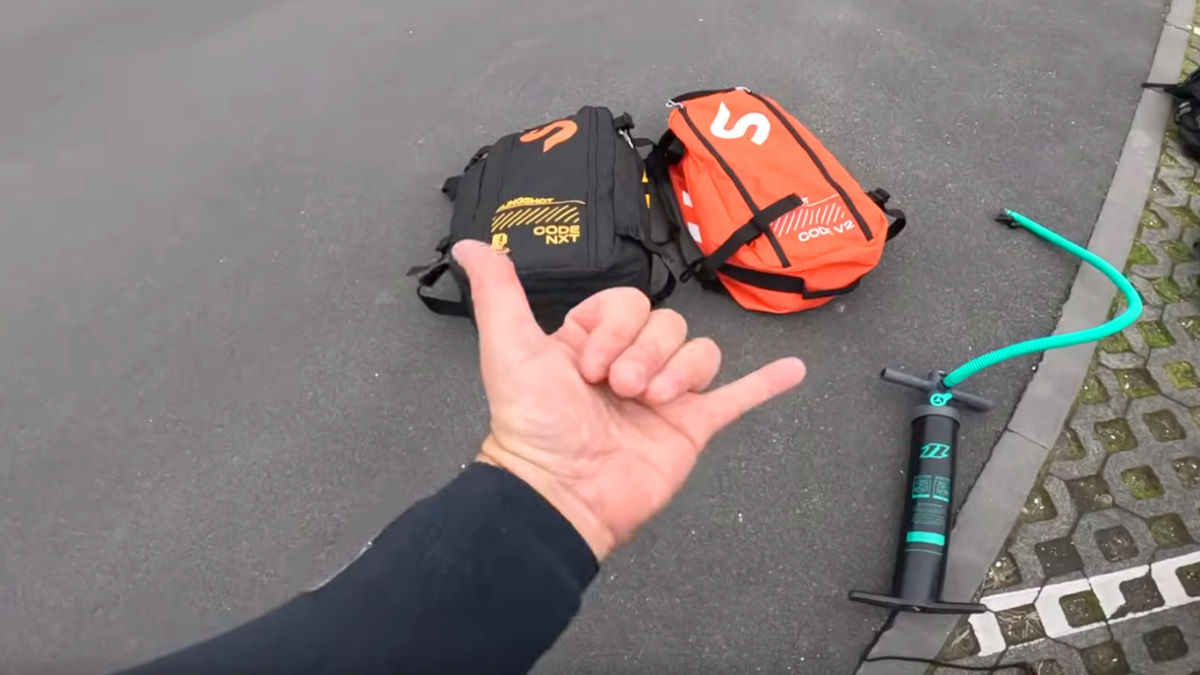
Jason's been excited to try these kites, and especially the NXT since it was developed and ridden by World Champion Jeremy Burlando, who Jason has had the opportunity to see in person at the last two King of the Air competitions. While Jason is the first to admit he can't compete with Jeremy's insane riding ability, he has put in a lot of time on these kites, and especially the NXT, and he's found quite a lot to say about them.
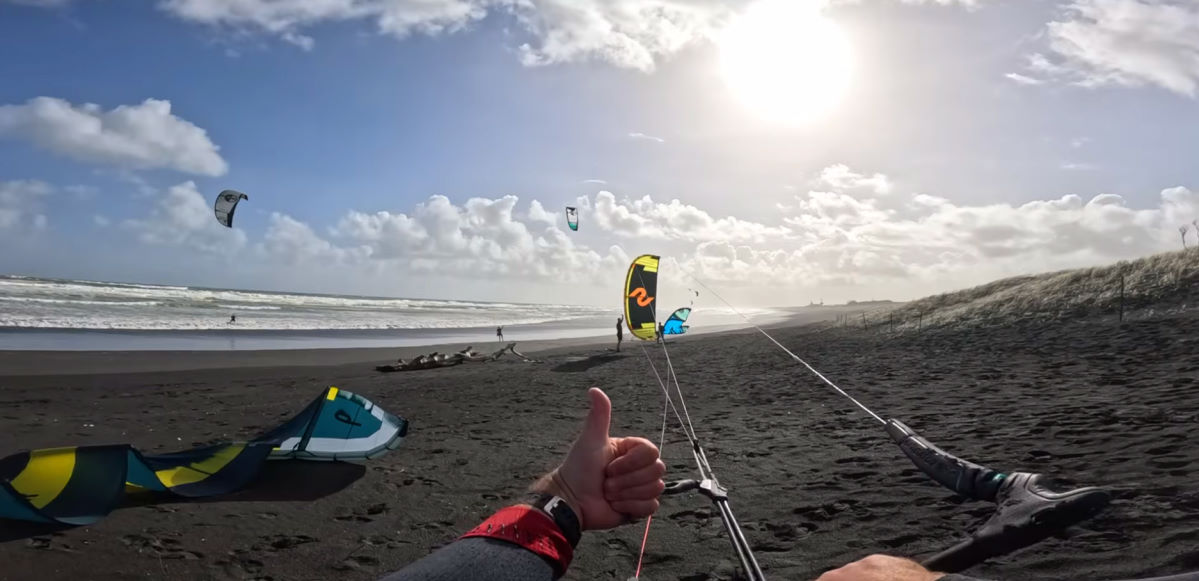
Bar Pressure
Overall, both the Code v2 and the Code NXT are very similar kites and both hold a bit of magic in their respective lift vs bar pressure. Both have rather light bar pressure and feel nicely balanced in respect to the weight of each kite. Compared to other kites you may be familiar with, the Code V2's bar pressure is in the ballpark of the Orbit Pro and Nitro v2, yet a bit heavier. The NXT's bar pressure is a little closer to the Harlem Force and Evo D/LAB. These are certainly some of the lighter bar pressures out there.

This light feel is a bit deceptive when it comes to the power in the kites. They don't feel particularly powerful while you're riding around, or even when you send them, yet they catch every bit of wind as you fly and especially while you descend, giving you extra hangtime. This is most pronounced on the NXT, as you'd expect from the Aluula version.
Riding Disciplines
It's probably no surprise that, given their shape and having three struts instead of five, these kites do feel a bit more like freeride kites that are big air focused, but would likely be more versatile in other disciplines than some of the other purely big air focused options on the market. This should translate nicely to the other sizes, and particularly the larger sizes where you are not looking to loop as much, especially with the NXT because it has a very respectable low end. Jason really enjoyed this feel since he likes to freeride as well, but it was a turnoff to one of his friends who's dialed in to his Orbit kites and only likes to ride when it's windy enough for a 10m or smaller.

Wind Range
When Jason first headed out on the 9m NXT, it started off as a moderately light session at 22 knots gusting to around 28. His friends were on 10m Orbits, so he thought he might struggle a bit, but he didn't have any issues jumping to the same height and throwing the same level of loops, some over 10 meters, and even doing rotation loops in that sweet spot of 7 to 10m.
He felt so comfortable in this wind range that it reminded him of the ease-of-use of the Vortex with the low-end power of the Evo D/LAB. It normally takes Jason a fair amount of time to get dialed in on a new kite shape, but he was landing frontroll kiteloops after only three or four jumps. The light bar pressure and pleasantly deceptive power and speed of the kite really boosted his confidence, so that first session was a lot of fun.
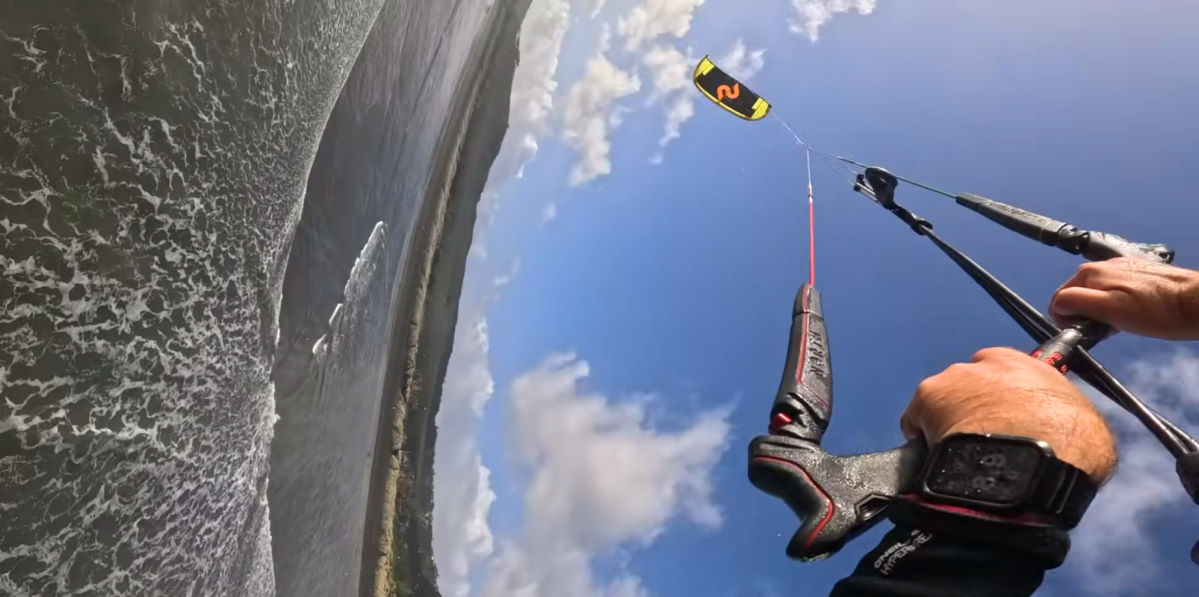
One potential negative he experienced as the wind climbed and became gustier with more holes was that he had to be more wary of where he was putting the kite as he ascended in his jumps. At times, it felt like the kite had a little habit of wanting to move a bit further forward overhead, and he'd lose some feeling in the bar if it was just parked over his head. Now, this tendency to push forward is arguably part of the reason for the kite's amazing lift, and he was able to negate this tendency to push forward by keeping the kite a bit more active either by parking it past 12 to either side of the ascent or by moving it back and forth with sent jumps. Of course, you could argue that parking it like that is bad technique, but it's something a progressing rider might run into while hoping to get higher jumps. Jason's friends who were at his level and were used to the Orbit also found they would lose track of this kite a bit when it was overhead, so it does seem to be something you'll want to watch out for when it's gusty.
This was just a minor setback, though, and it didn't stop Jason from wanting to try the 9m or even the 8m in over 35 knots. He's noticed both on kites he's tested and in interviews with team riders that on competition-level kites like this, there are often one or two sizes that riders feel are the best. These days it's usually the 8m. While the Code NXT doesn't quite seem to be on a par with the Evo D/LAB in terms of boosting potential, it does seem to be better than the Orbit. He thinks it would be very interesting to get his hands on the 8m for the Woo Worlds competition.
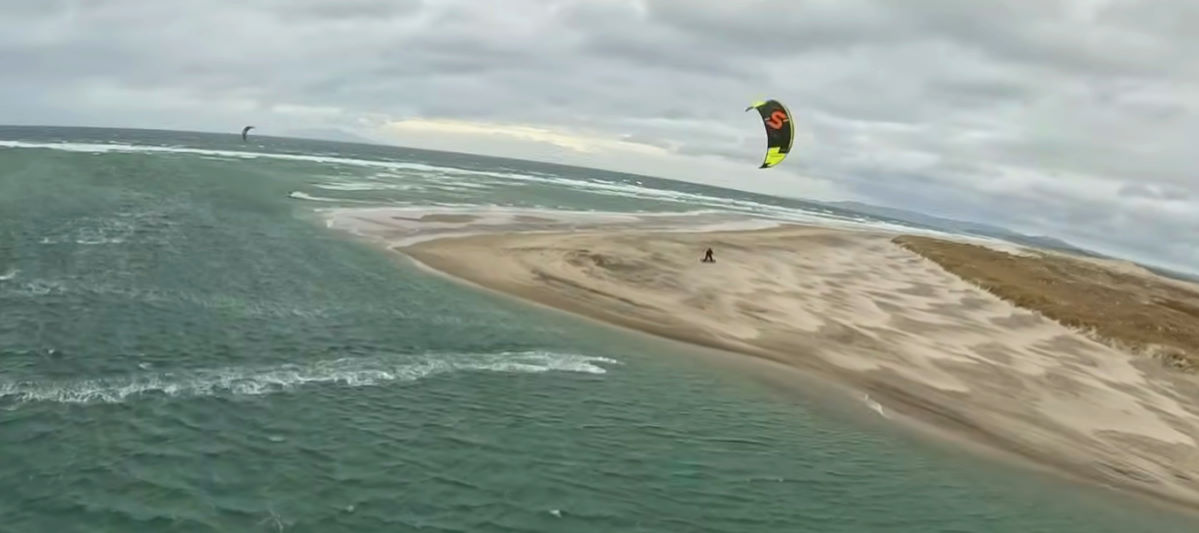
Review
The Code v2 also has a great amount of lift due to its shape, but of course it doesn't have quite the same potential as the NXT since it doesn't move as fast and you can't fire it up to 12 as quickly. It's probably in the same area as the Flysurfer Era, Orbit Ultra, or Ozone Vortex, with the NXT getting up into that top tier with the XR and Evo D/LAB.
When you are coming down, Heli Loops are just wonderful and seem to lift you back up a little bit on both the smaller, tighter loops and the larger, sweeping ones from the outer edges of the window. It was such a nice feeling that it left Jason just a bit giddy as he would come in to land and then lift back up in that last meter off the water. Both kites did this, though of course the NXT did it a bit more.
The NXT, being an Aluula kite, certainly loops well and might be one of the best on the market for big, impressive-looking single loops in strong wind, but due to the shape and the emphasis on creating lift, it isn't quite up there with the top loopers like the Orbit or Nitro. It has more of a wider, almost flatter and rounded loop than a very tight, on-the-spot loop. There's always a tradeoff somewhere, and just as the top loopers exchange a little height for that amazing looping and catching ability, the top jumpers lose a little looping ability.
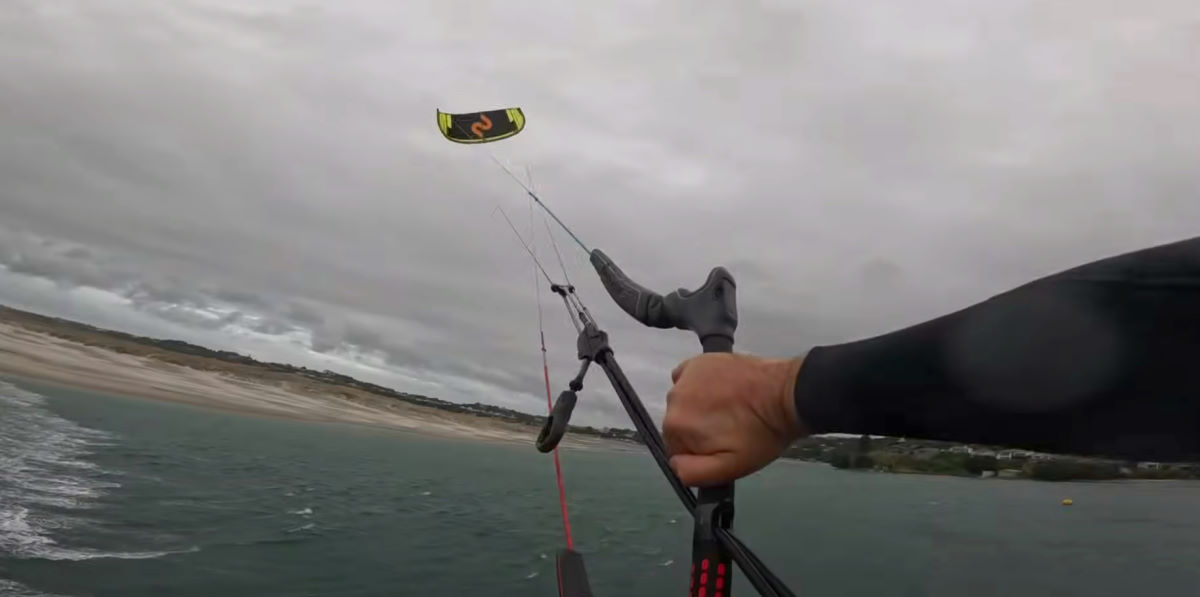
That said, it is still a super fast kite, so it does get around if you crank the bar. If you do slow it down or try to get it lower by sheeting out, you can get a little delay on its climb back up to 12. Use caution with this, though, and try to keep the kite active right through the loop and moving out to the side to keep line tension, thus getting the kite back up for a faster catch.
Compared to the Evo, this kite's flight path around the loop is not quite as fast, but in the conditions Jason was in, it didn't seem to have quite as much yank, either. This gave him the confidence to try the tricks he's more hesitant to throw on the Evo D/LAB. It begs the question of whether the Code was designed not just for boosting and hangtime, but also to assist some of the strong points of Jeremy's riding style, particularly big handle passes. He can probably get a little more slack for his passes, but this element is also not so intrusive that it's going to be noticeable to the regular rider who is never going to be unhooking this kite in over 25 knots, let alone while 15m up in the air.
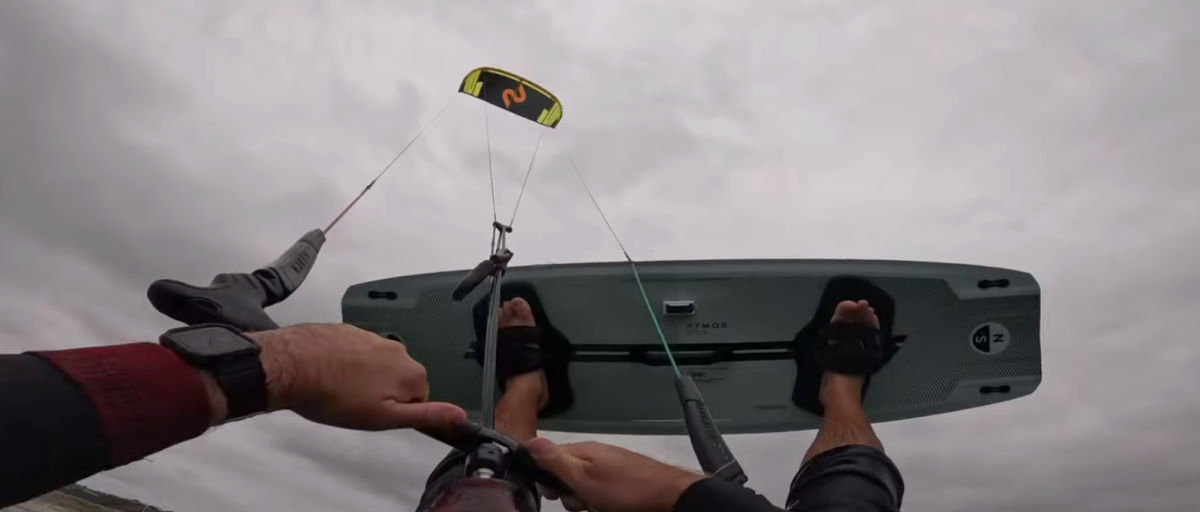
This might also be why you will rarely see Jeremy do double loops in competitions. He can double loop among the best in the world, but he might not attempt them in competitions because the advantages of the Code NXT lie elsewhere and don't translate into ease of double loops.
On the Code v2, the looping was still very respectable, but it doesn't have the Aluula quickness to forgive some of the challenges with looping. If you're progressing with loops, you might want to size down. It's not a bad looper by any means, but it's not at the level of other loop-dominant kites. Now, the lift on the catch does make up some ground there, as well as its boosting and hangtime. The ability to swap disciplines is another point in its favor.
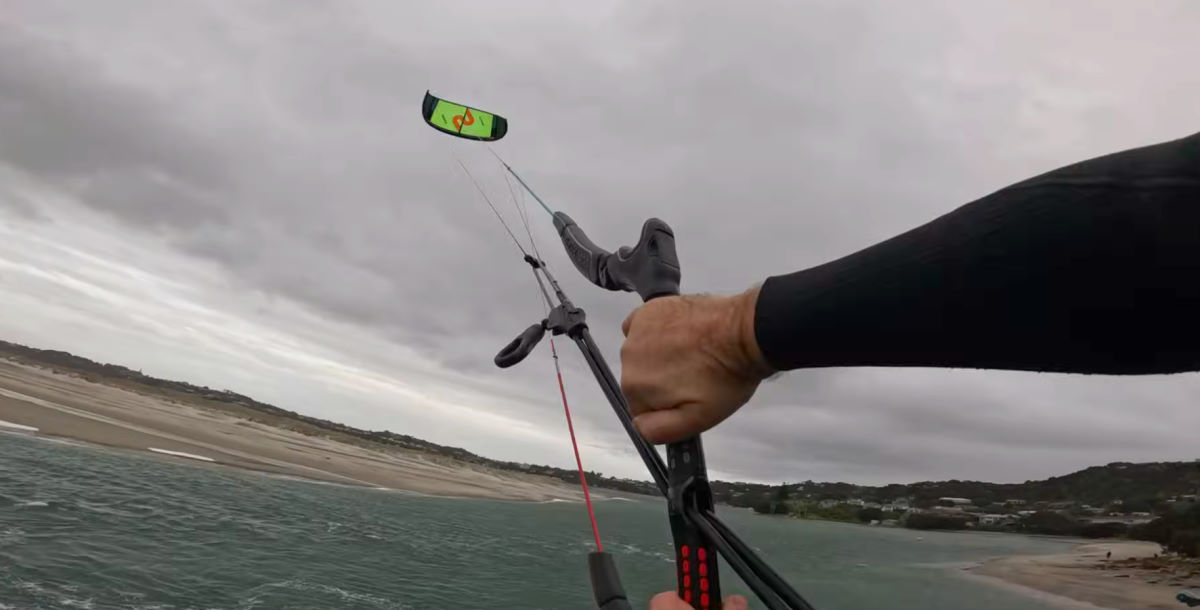
Summary
All in all, Jason really liked both kites for progressing riders. They may not be as easy for boosting as kites like the Rebel SLS, or as easy for looping as the classic Orbit or Nitro, but they offer a very high level of overall performance in a fairly easy-to-use package that just might take a little more getting used to if you're coming from other kites. The NXT in particular could be a contender for his favorite kite of the year.
The Code v2 is a great option, but as a loop-minded kiter, Jason wouldn't quite put it in the top spot for dacron big air kites, though that could change as he gets more time on it in bigger wind.
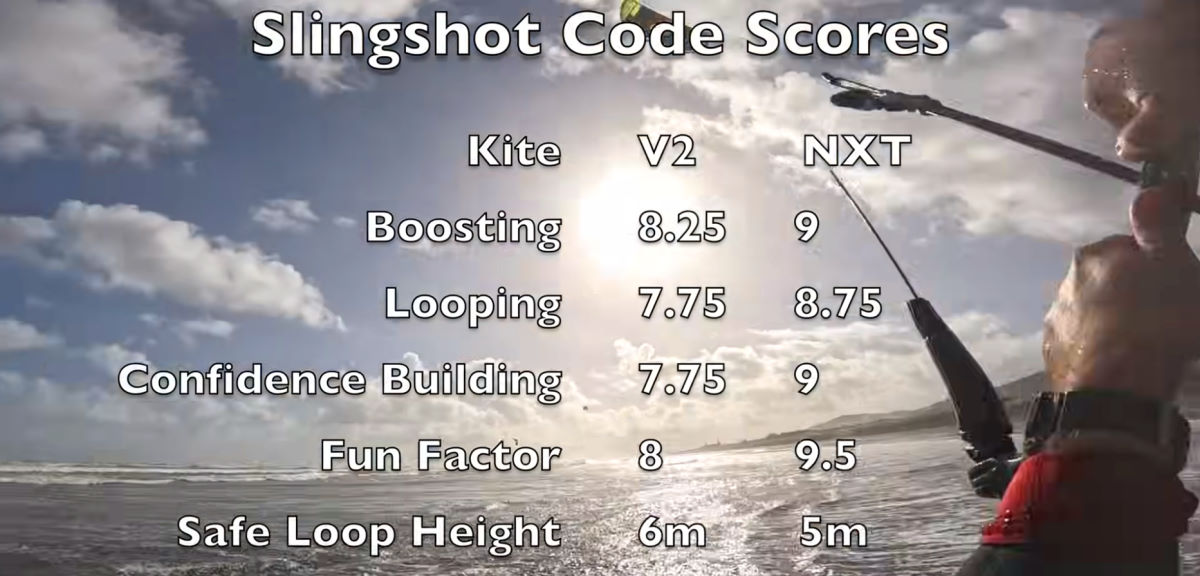
MACkite Subscription Links:
YouTube | Instagram | Spotify Oddcasts
Contact MACkite Below:
800.622.4655 | Kiteboarder@MACkite.com | LIVE Chat Messenger
Recent Posts
-
Hot New Releases: MACkite Brand Parawing & Mystic Majestic Ex Custom Harness
MACwing v.5 Beta Single Skin Single Use Jake and Ryan from MACkiteboarding unveiled an excit …1st Apr 2025 -
Code Foils 1250R, with Josh Ku and James Casey | Training, Gliding, and Light Wind Downwinding
Introduction: The Rise of the 1250R The Code Foils 1250R is the latest and largest addition to Co …1st Apr 2025 -
2025 F-One Rocket Surf Prone, Rocket Wing Crossover, and Rocket Midlength Boards
Mid-length foilboards are rapidly growing in popularity and could soon dominate the market, especi …27th Mar 2025

